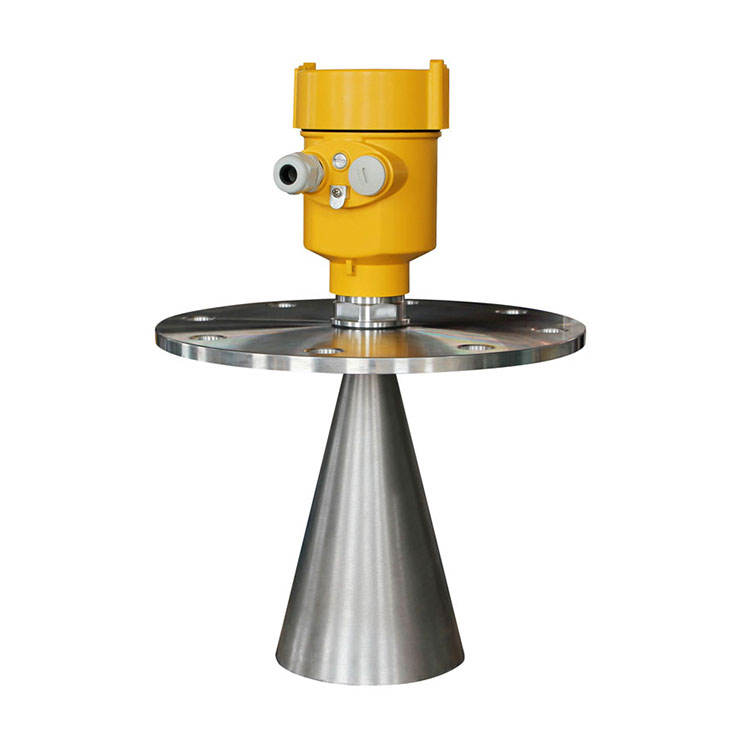Radar level gauge is one of the commonly used equipment. Radar level gauges have a wide range of uses and many types, so we need to have enough understanding of radar level gauges. For example, how to debug a radar level gauge? What is the working principle and classificationThe working principle and classification of radar level gauge1. The radar level gauge works in pulse echo mode, and its working antenna emits short-wave microwave pulses to the measured object. Part of the microwave passes through the measured medium, and the other part is received by the transmitter after being reflected on the surface of the measured material. The transmitter also functions as a receiver. The distance between the transmitting antenna and the surface of the material is proportional to the running time of the microwave pulse: D=c.t/2, where D is the distance between the transmitting antenna and the material; C is the speed of light; T is the running time. The ultrasonic sampling method is used to collect each point in the transmitting and reflected beams, and the distance between the medium and the transmitting antenna is obtained after signal processing. However, this measurement principle is not suitable for high-precision measurement of short distancesHow to debug the radar level gauge? 2. For high measurement accuracy, the principle of frequency difference must be applied. Assuming an empty tank with a height of 40 meters, the microwave round-trip time is about 1.33*10-7 seconds. When the fuel tank is gradually full, the round-trip time will gradually decrease. In such a small measuring range, in order to obtain high accuracy (1mm), it is difficult to calculate the precise distance by measuring time. Therefore, composite pulse radar technology came into being. Using this technology, the same antenna transmits and receives modulated pulses, and the pulse signal returned from the surface of the measured medium is continuously compared with the pulse signal of the fixed frequency band transmitted by the antenna. The frequency difference represents the measuring distance, thereby measuring the height of the liquid level3. According to different measurement principles, radar level gauges can be divided into two types. It is a radar level gauge that controls the liquid level, and its accuracy is generally about 10mm; the other is a radar level gauge, which is used for precise measurement and settlement, with an accuracy of 1mm. Structurally, it is divided into rod antenna, horn antenna and cable antenna, debugging, installing and using the analog signal output by the radar level gauge. The digital signal is superimposed on it by 4~20mADC to realize the compatibility of analog signal and digital signal, conforming to HART protocol. It can provide users with more attractive solutions, especially suitable for large fluctuations, condensation, suspension, viscous slurries, dirty media, and corrosive liquid level measurement. It has a continuous frequency self-calibration function to ensure stable measurement accuracy; it uses HART protocol for digital communication, and uses communication equipment or portable handheld devices to process liquid level variables; the output signal is an analog signal and a HART digital signal superimposed. Using the 4-20mAhar manual operator, the output signal can be divided into liquid level, calculated volume or standard volume; all configuration information and programs are stored in non-erasable memory. When the power is interrupted, all data can be restored; the frequency is continuously self-calibrated to ensure the accuracy of the level gauge.
Post time: 21-09-21
